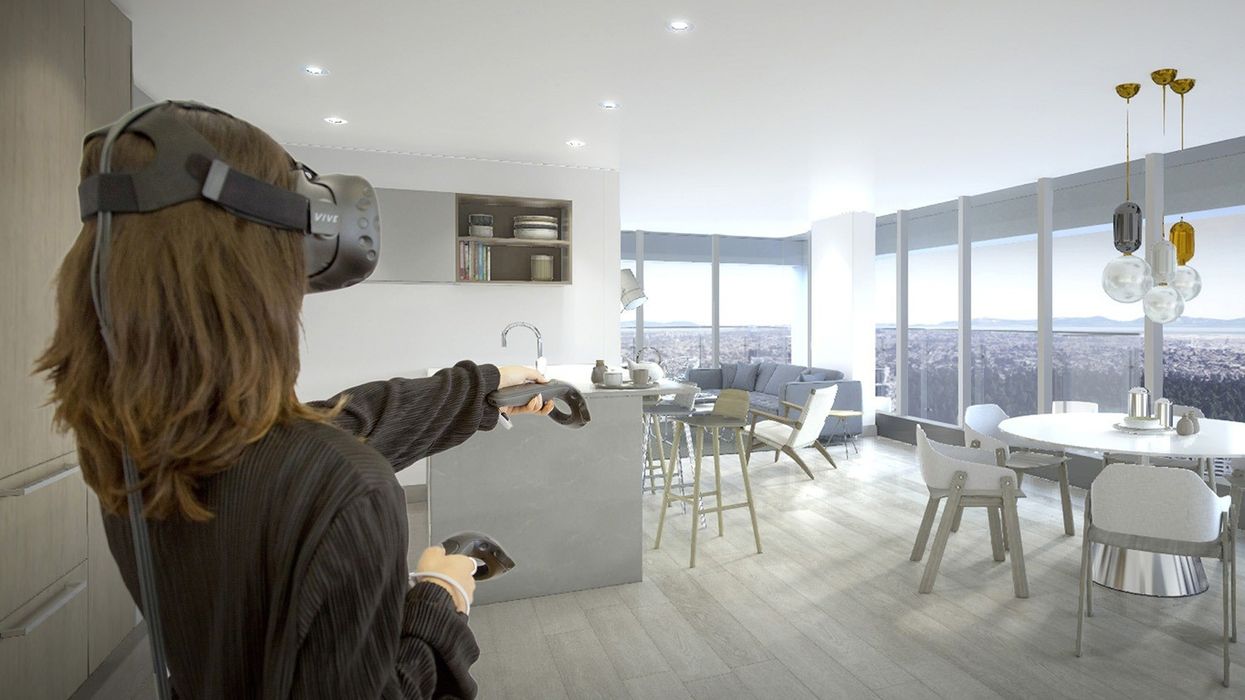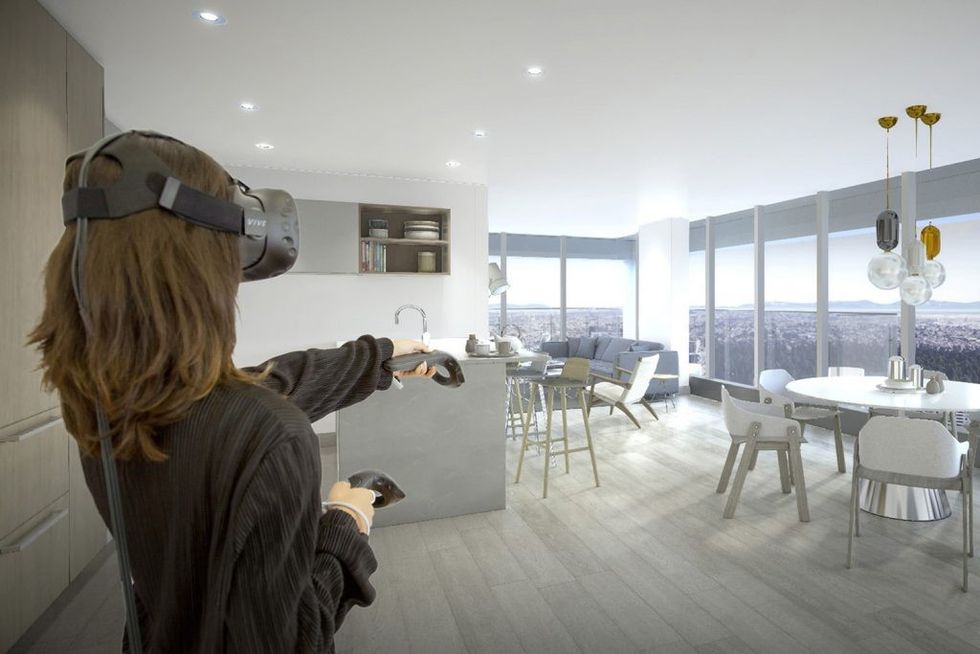
Imagine putting on a headset or a pair of goggles and being transported into a three-dimensional world that allows you to take a virtual tour of a rental property or experience a condominium floor plan come to life. Virtual reality (VR) offers you that opportunity.
VR has taken the gaming world by storm, and now, realtors and developers have the opportunity to turn this three-dimensional tool to their advantage, both for new construction and resale.
“Virtual reality is a fabulous way to understand space, and from a marketing standpoint, it’s really, truly convincing,” says Nick Moshenko, a partner at Designstor, a creative visualization agency that is currently launching its virtual reality offerings to clients.
It’s the difference between looking at photos of rooms posted on the MLS (multiple listing service) system and walking through those rooms, or between looking at the blueprints for a condominium building and actually touring the 30-floor tower. In other words, virtual reality brings the spaces to life.
“It’s a new storytelling medium that will be disruptive and transforming,” says Rob Kendal, managing director of Yulio Technologies, a company that has created a VR plug-in that brings renderings to life.
“There’s just massive momentum behind the medium.”
Yulio Technologies and Designstor, both based in Toronto, are at the vanguard of this coming wave. Although they serve different markets, both companies were quick to recognize the potential this tool has to meet the needs of their clients.
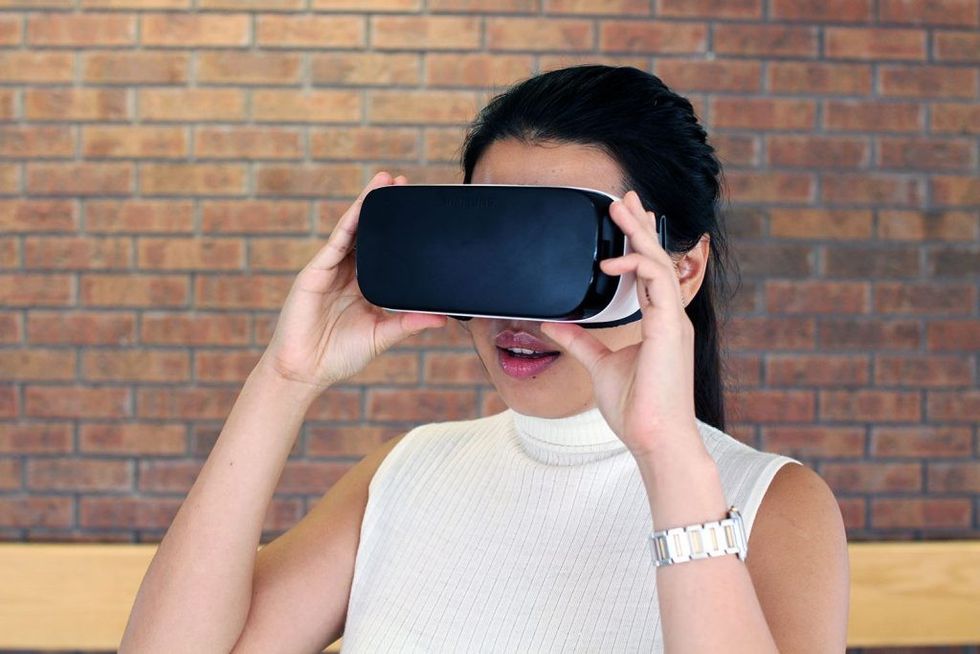
Yulio’s plug-in
Kendal, who also owns KISP, a business that focuses on office space planning and furniture asset management, says developing a VR tool is an outgrowth of a need he identified among his clients for a better way to visualize spaces.
“Virtual reality closes the gap between a designer’s vision and the customer’s perspective,” Kendal says.
Yulio’s VR plug-in is a tool that architects, designers, developers and realtors can use with ease. It turns renderings into 3D rooms that can be viewed by inserting a smartphone into an inexpensive VR headset. Instantly, the customer is moving through the hallways of an office building or rooms of a condominium, getting a feel for the space.
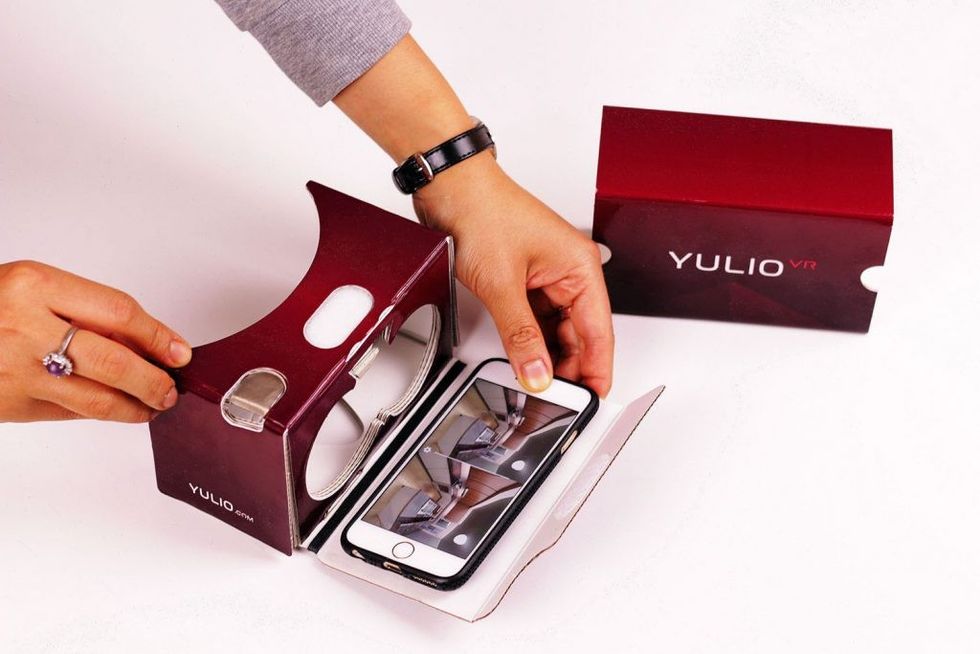
For commercial clients who want to rent out their office spaces, for example, Kendal’s team can create alternative designs for how the space can be configured (open plan or individual offices) and furnished. By loading the designs into Yulio’s plug-in, the client can get a sense of how the space would feel when it’s occupied.
Yulio’s software also allows a realtor to tour the space with a client remotely. The two can be in different locations, but walk through the space together.
“We’re working with tools that architects and designers already have,” Kendal says. “With the Yulio plug-in, they can transform it to a 3D experience. It’s pretty powerful stuff.”
Paul Bradshaw, vice-president of sales for Mayhew, a Richmond Hill-based office interior design firm, uses Yulio in working with realtors, and is an enthusiastic proponent of VR.
“We work closely with realtors to customize interior spaces and this allows us to show how the space could perform for their customers,” Bradshaw says. “The infrastructure cost is minimal and it’s readily accessible to everyone.”

Game on for Designstor
At Designstor, Moshenko and his team take virtual reality to a more sophisticated level geared toward developers whose projects exist only on the drawing board.
“Our 3D software creates video-game quality images so that you can walk through the building and interact,” Moshenko says. “You put on a set of goggles and walk around a kitchen, changing materials, such as finishes, and furniture. As you walk around the space, you can change it to suit your needs.”
Moshenko, whose clients include such residential real estate developers as Minto and Great Gulf, says virtual reality has “amazing ramifications for sales and design. It has the potential to change the real estate business.”
He believes that the gaming-level VR his firm creates, designed for the HTC Vive headset, could revolutionize the way new condominium developments are sold to buyers. Imagine being able to virtually walk through your suite and add the finishes that appeal to you to see if they actually suit the space.
“I’m pretty excited about the potential ability to duplicate a sales environment,” Moshenko says. “Creating a sales centre and model suites is very expensive, and we can replicate that sales environment. We can bring all the floor plans to life.”
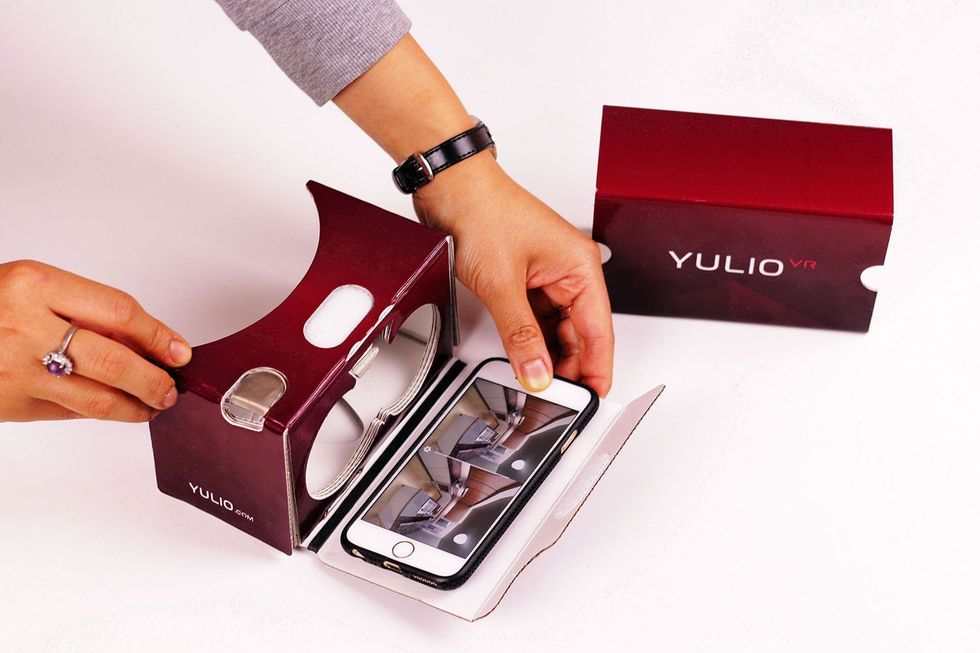
Vincent Hui, the associate chair of the Department of Architectural Science at Ryerson University, has integrated Yulio into the first-year architecture program and is excited about the potential he sees in VR.
“It will be the status quo, not only for architecture, but for realtors,” he says.
